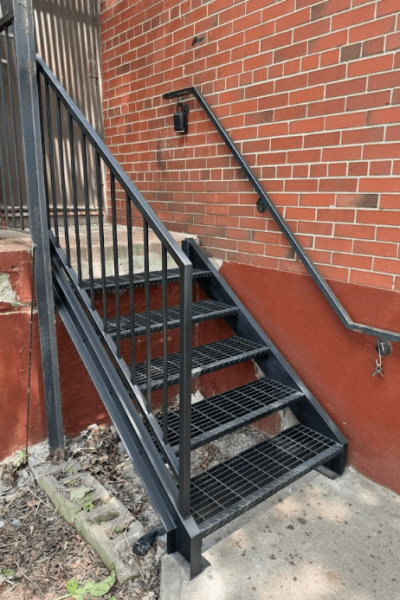Last Updated on June 16, 2025 by chanuka chanuka.23e2
Published: January 13, 2025
Winter weather can be harsh on outdoor railings, whether they are made of wood, metal, or other materials. Snow, ice, freezing temperatures, and moisture can cause significant damage, leading to costly repairs or replacements. Fortunately, with proper care and preventative measures, you can keep your railings looking and functioning their best through the winter months.
Key Takeaways
- Proactive maintenance is essential to protect railings from winter damage.
- Materials like wood, metal, and vinyl have unique vulnerabilities to consider.
- Simple steps, like cleaning, sealing, and regular inspections, go a long way in ensuring durability.
Understanding the Vulnerabilities of Different Railing Materials
- Wood Railings
- Vulnerability: Wood is prone to warping, cracking, and rotting due to moisture absorption.
- Signs of Damage: Splintering, discoloration, and softness.
- Metal Railings
- Vulnerability: Metal railings are susceptible to rust and corrosion when exposed to moisture and salt.
- Signs of Damage: Rust spots, discoloration, and structural weakening.
- Vinyl Railings
- Vulnerability: While durable, vinyl can crack under extreme temperatures.
- Signs of Damage: Cracks, brittleness, and fading.

Steps to Protect Your Railings from Winter Damage
1. Clean Your Railings Before Winter Hits
- Remove dirt, leaves, and debris using a soft brush and soapy water.
- Ensure no organic material is trapped, which can promote rot or rust.
2. Apply Protective Coatings
- Wood: Use a weatherproof sealant or stain to prevent moisture penetration.
- Metal: Apply rust-resistant paint or a protective coating.
- Vinyl: While typically low-maintenance, ensure surface cracks are sealed.
3. Install Rail Guards or Covers
- Use plastic or fabric covers to shield railings from snow and ice.
- Consider temporary weather guards for areas prone to heavy snowfall.
4. Address Vulnerabilities Immediately
- Repair cracks, chips, or loose fittings before snow accumulates.
- Replace damaged sections to prevent further degradation.
5. Avoid Using Harsh De-Icing Chemicals
- Opt for non-corrosive de-icers like calcium magnesium acetate near railings.
- Avoid rock salt, which can damage finishes and promote rust.
6. Inspect Regularly During Winter
- Check for new cracks, rust spots, or signs of wear.
- Remove heavy snow buildup to prevent undue stress on railings.
Long-Term Maintenance Tips for Year-Round Protection
- Annual Inspections: Schedule a thorough inspection every spring and fall.
- Routine Cleaning: Keep railings clean year-round to avoid buildup of damaging substances.
- Upgrade Materials: Consider modern materials like powder-coated metal or composite railings for enhanced durability.

Final Thoughts
Protecting your railings from winter weather damage is an investment in their longevity and your home’s curb appeal. By taking a proactive approach with cleaning, sealing, and regular maintenance, you can ensure your railings withstand even the harshest winter conditions. Small steps taken now will save you time and money in the future.
FAQs
How often should I apply a protective sealant to wood railings?
Last Updated on June 16, 2025 by chanuka chanuka.23e2
It’s best to apply sealant annually, ideally before winter.
Can I use sand to prevent slipping on stairs near railings?
Last Updated on June 16, 2025 by chanuka chanuka.23e2
Yes, sand is a safe alternative to harsh de-icing chemicals and won’t damage railings.
What’s the best way to remove snow from railings?
Last Updated on June 16, 2025 by chanuka chanuka.23e2
Use a soft-bristled brush or broom to gently remove snow without scratching the surface.
Are vinyl railings completely maintenance-free?
Last Updated on June 16, 2025 by chanuka chanuka.23e2
No, vinyl railings still require cleaning and inspections to ensure they remain crack-free.
Is it worth upgrading to composite railings for better winter durability?
Last Updated on June 16, 2025 by chanuka chanuka.23e2
Yes, composite railings are highly resistant to moisture, temperature fluctuations, and wear, making them a great long-term investment.
 Chat
Chat 








